In Dragon's Dogma 2 Many players have a question about how to increase FPS and remove lags (freezes) in the game. The fact is that the project is poorly optimized, so it often slows down even on computers that meet the recommended system requirements. In this guide, we'll tell you what graphics settings you should choose and what else you can do to get rid of crashes and stutters in the sequel.
Dragon's Dogma 2 System Requirements
However, first we advise you to familiarize yourself with the minimum and recommended system requirements of the game. However, we immediately note that the developers played it safe and significantly increased them, so you may well try to run it on a weaker computer. Next we will indicate which one.
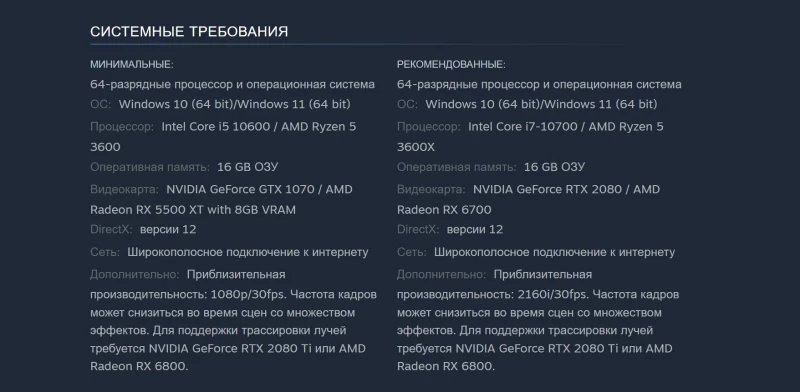
Minimum System Requirements
- OS: Windows 10 or 11
- CPU: Intel Core i5-10600 or AMD Ryzen 5 3600
- RAM: 16 gigabytes
- GPU: NVIDIA GeForce GTX 1070 or AMD Radeon RX 5500 XT with 8 gigabytes of video memory (without ray tracing, and with it -
- NVIDIA GeForce RTX 2080 Ti or AMD Radeon RX 6800)
- DirectX: 12th version
- Hard drive: 60.7 gigabytes of free space
The game's Steam page states that a similar configuration will be needed to run the game in FullHD resolution and 30 FPS. However, in reality you will need a less powerful machine. When you select minimum graphics settings and FSR3 is enabled, you can easily use an Intel Core i5-9400f or AMD Ryzen 5 1600 processor and a GeForce GTX 1060 video card. However, in the city, performance can drop to 25 frames per second or lower.
Recommended System Requirements
- OS: Windows 10 or 11
- CPU: Intel Core i5-10700 or AMD Ryzen 5 3600X
- RAM: 16 gigabytes
- GPU: NVIDIA GeForce RTX 2080 or AMD Radeon RX 6700 (without ray tracing, and with it - NVIDIA GeForce RTX 2080 Ti or
- AMD Radeon RX 6800)
- DirectX: 12th version
- Hard drive: 60.7 gigabytes of free space
Such a PC, according to the developers, will be able to produce 30 frames per second at 4K resolution. However, they do not indicate graphic settings (we can assume that we are talking about high parameters) and the operation of DLSS (FSR3).
If you plan to play at 1080p resolution, then for high settings and ray tracing enabled, a GeForce RTX 3060 video card and an Intel Core i5-10400f processor will be enough. Such a system will produce 50-60 FPS. For 1440p resolution, it is advisable to replace the GPU with an RTX 4060 Ti or even an RTX 4070.
Optimal graphics settings for Dragon's Dogma 2
Before you start digging into configuration files, unlocking frame generation for DLSS, or changing settings in the NVIDIA and Radeon Control Panel, we advise you to change your graphics settings. Next, we will look at each parameter individually and tell you how much it affects overall performance and what value you should choose for it.
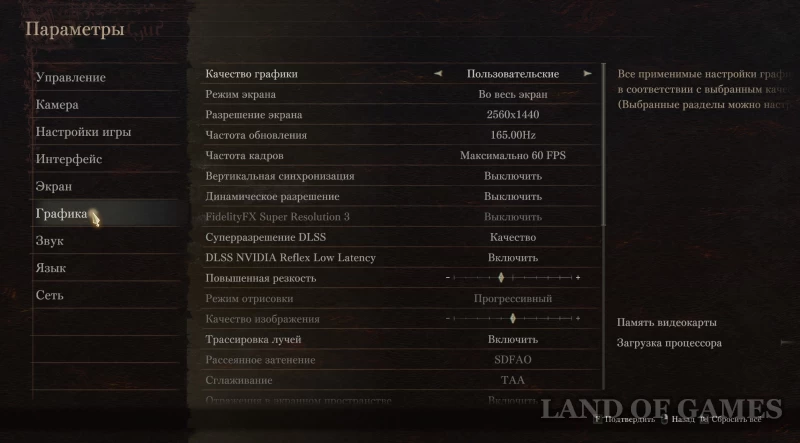
- Screen Mode - Select Full Screen. By default, you may have Window selected.
- Screen resolution – must match the resolution of your monitor.
- Refresh rate – should match the frequency of your monitor.
- Frame Rate - Select "Maximum 60 FPS" as the game is still poorly optimized and it is unlikely that you will get more than 60 frames per second, but this will reduce the load on your video card and get rid of sudden FPS spikes that can negatively affect gameplay
- Vertical Sync - Select Off. If you wish, you can enable this option in your GPU's control panel.
- Dynamic resolution – can be “Enabled” on weak machines. Apparently, this option changes the quality of the image (mainly effects) in real time, maintaining a stable frame rate. It gives a significant increase in performance without significantly degrading the image. It is an alternative to FSR3 and DLSS in “Quality” mode - the picture looks a little clearer, but less smooth.
- FidelityFX Super Resolution 3 is a resolution scaling system from AMD, but it can also be used on NVIDIA video cards, especially those that do not have the RTX prefix in the name. It allows you to significantly increase the FPS in the game, but the picture may become a little worse. FSR3 looks a little sharper than DLSS at this point in time.
- Super Resolution DLSS is a resolution scaling system from NVIDIA available on RTX series video cards. We recommend choosing the “Quality” mode. Currently looks more soapy than FSR3. Enabling FSR3 or DLSS removes flicker from grass and shadows when anti-aliasing is turned off.
- DLSS NVIDIA Reflex Low Latency – reduces input lag. We recommend turning it on if you have activated DLSS and your video card is working at 100%, but does not provide an increase in frames. If the GPU is limited by the processor, that is, it does not work at 100%, then select the “Enable + Boost” value.
- Increased sharpness - can only be changed when FSR3 or DLSS is enabled. We recommend setting it to 40-50%.
- Rendering Mode – Select the Progressive option.
- Image quality – this option will only be available when DLSS and FSR3 are disabled. Be sure to set it to at least 50-60%, otherwise the picture will become very blurry. Requires a lot of video memory.
- Ray Tracing – Can be enabled if you are playing at 1080p and using at least an RTX 3060 graphics card and have DLSS or FSR3 enabled. It looks nice, but the performance penalty will be significant.
- Diffuse occlusion - can only be changed when ray tracing is turned off, as it performs a similar function. SDFAO is better than SSAO, but it eats more resources. We do not recommend that you disable this option, as the picture without it looks much worse.
- Anti-aliasing - If you are not using FSR3 or DLSS, then select TAA. Although in Dragon's Dogma 2 (and other modern games) this option often blurs texture details rather than simply clearing them out of ladders, it still provides a sharper image than using the resolution scaling functions.
- Screen Space Reflections – Set this to “On”, otherwise water and other surfaces will look noticeably worse. Disable it last if you have nowhere else to get FPS.
- The quality of the meshes does not greatly affect the performance and image, so you can set it to “Maximum”. On weak machines, set it to “Medium”.
- The quality of texture filtering also does not greatly affect the performance and image, so you can set it to “High (ANISO x16). If even a couple of FPS are important to you, you can set it to “Low (bilinear).
- Texture quality – if you have a large amount of video memory, we recommend that you set the value to “High (3GB)”. If memory is low, select "High (1 GB)". If you are using a very weak GPU, you can set it to “Medium (0.25 GB)”.
- Grass/Tree Quality – Select “High” on recommended machines and “Low” on weak machines.
- The quality of resource-intensive effects “eats” quite a lot of resources, but it makes the game noticeably more beautiful, since if you set it to “Low”, you simply won’t see many effects. So keep it on “High” and lower it only as a last resort.
- The quality of the shadows “eats” a lot of video memory and makes the picture noticeably more pleasant. Moreover, the difference between “Max.” and "High." not very large, so you can leave the last value. On weak video cards, you can select “Low”.
- Shadow Cache – Select On to reduce lag.
- Contact shadows – does not affect performance much, but it does increase shadow detail, so we recommend selecting “Enable”.
- Motion Blur - Choose your preference, but when turned off, the image becomes less blurry when running and you'll get a couple extra FPS.
- Glow – has virtually no effect on performance, but at the same time improves lighting slightly (although this is a matter of taste), so we recommend “Enable”.
- Depth of field has virtually no effect on performance, so choose at your discretion.
- Glare – has virtually no effect on performance, but at the same time improves lighting slightly (although this is a matter of taste), so we recommend “Enable”.
- Lens distortion – you will hardly notice the difference when turning this option off, but it will add a couple of FPS to your performance.
- Subsurface Scattering – character models look a little better, but performance is noticeably degraded, so we recommend turning it off on weaker machines.
- Smoothness of movement – we didn’t notice much of a difference, so you can select “Low”.
How to increase FPS in Dragon's Dogma 2
If you are sure that your PC should run the game without any problems at certain graphics settings, but you still experience lags, freezes and stutters, then we advise you to use the methods indicated below.
Disable Data Processing
Go to “Settings”, click on the “Network” section and look for the option here “Data processing for the purpose of analysis.” Turn it off. Some players note that this gave them a few extra FPS.
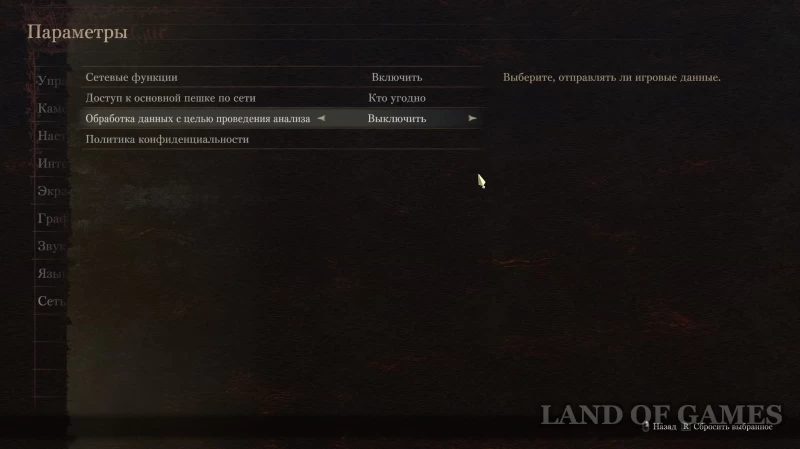
Set priority to high
Open the task manager (Ctrl + Alt + Del), and then go to the “Details” tab and find DD2.exe in the list. Right-click on it, hover over “Set priority” and select the option "High". You will need to do this every time you start the game. For some players, the frame rate increased by 5-10 FPS.
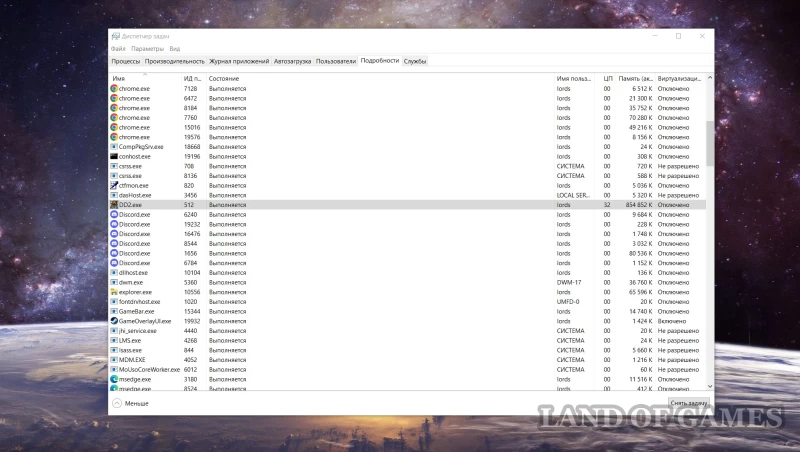
Customize the NVIDIA Control Panel
Right-click on the desktop, select “NVIDIA Control Panel” (available only for owners of GeForce video cards) and open the “Manage 3D Settings” section in the “3D Settings” tab.
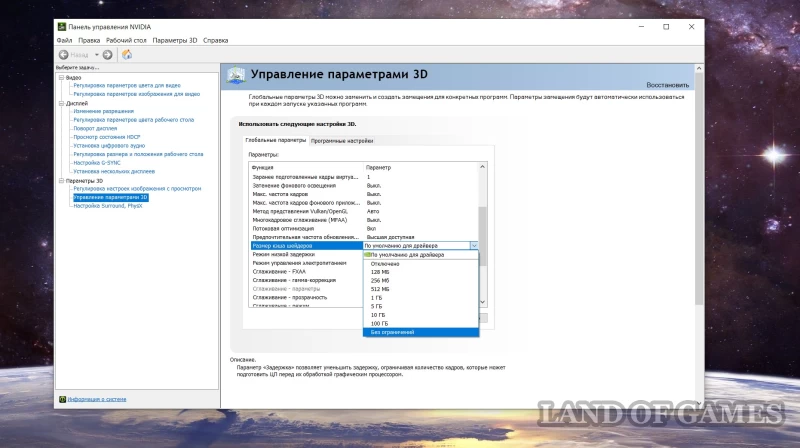
Now in the Global Settings category, find the option "Shader Cache Size"
and select a value "No limit". Some players note that this gave them a 10-15 FPS increase. However, you should know that if there is not enough memory on the disk where Windows is installed, you will have to manually clear the cache from the NVIDIA folder. Otherwise, your entire system will start to slow down.
Improve DLSS
For some unknown reason, the game does not use the latest version of DLSS with frame generation (the developers will most likely add it later), so players decided to unlock it themselves. This can be done using a custom modification, which you can download from this LINK.
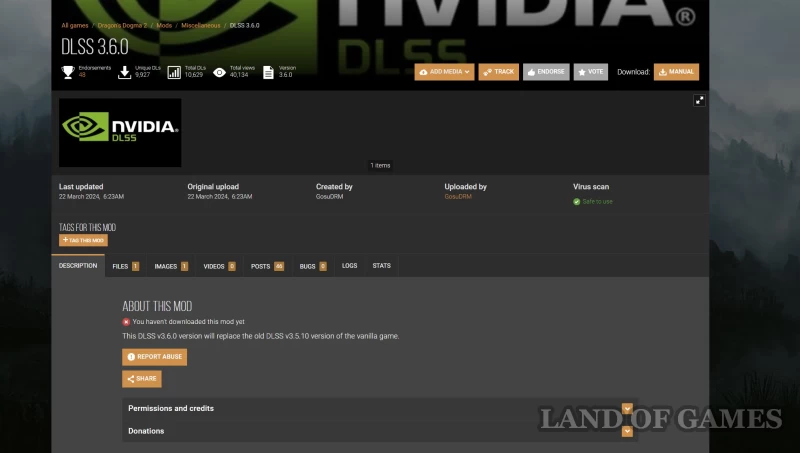
After downloading the archive, unpack it in any place convenient for you, and then transfer the contents to the game folder: C:\Program Files (x86)\Steam\steamapps\common\Dragons Dogma 2 (default). However, be careful, as this mod may lead to bugs, especially if the game is updated. We add that only owners of NVIDIA RTX 4XXX series video cards can use it.
Update shaders
Some players note that they were able to increase FPS by recompiling shaders (happens at the beginning of the game). To do this you need to follow these steps:
- Close the game if it is open and go to the folder where it is installed (we indicated the desired directory above).
- In this folder, find the file shader.cache2 and delete it.
- Launch the game and wait again for the shaders to install.
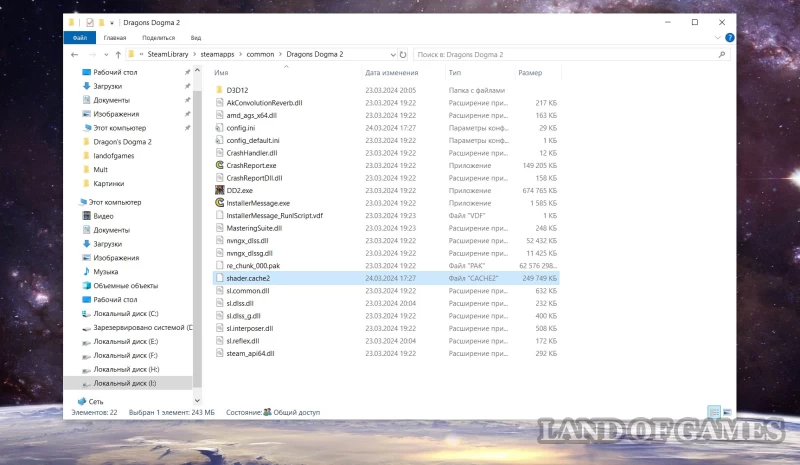
Dragon's Dogma 2 crashes on launch
In the end, we note that if you experience crashes to your desktop when you try to start the game, then the purchased DLC (add-ons) with bonuses are most likely to blame. For this reason, you need to delete all DLC files in .pak format in the game folder (listed above). You can also delete the CrashReport.exe file.
We would like to add that you should definitely update the drivers for your video card: NVIDIA or Radeon. We also recommend downloading the latest or required versions Microsoft DirectX, .Net Frameworks And Visual C++.

Comments
You need to login to add comments.
You can login with